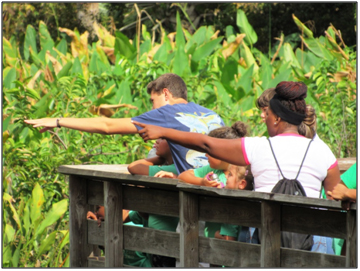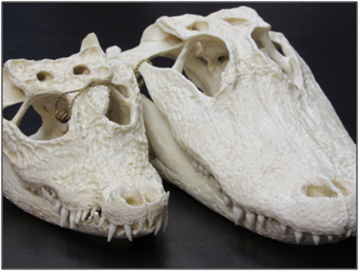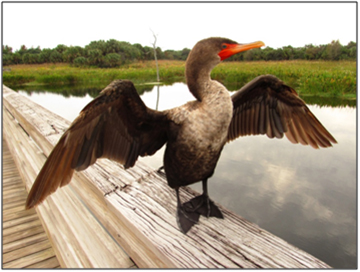School Programs
Return to Green Cay
Bring your class to an exciting, hands-on program at Green Cay! School programs are tailored to the educational level of your class (K-12). Most programs are designed to incorporate CPALMS Standards. Please contact us to learn more. Activities promote environmental awareness, conservation, recreation, and educate on health and wellness in the community. School programs are offered Tuesday - Friday mornings and last approximately 90 minutes. All programs include a classroom presentation followed by a boardwalk tour. All programs are by reservation only. Fees are *$2 per student, with a maximum of 60 students. Programs include one free chaperone (staff/parent) for every 10 paying children. Additional adults must pay the program fee. Please call the Nature Center at 561-966-7000 for more information.
*Effective October 1, 2025, all payments made with a credit or debit card (online or in-person) will incur a 3.0% service fee. This fee is assessed and collected by the credit card processor, NOT by Palm Beach County. No service fee will be assessed on payments made by check or cash
 School Field Trip Brochure
School Field Trip Brochure
To book a program, please fill out the request form and email it to greencay@pbc.gov.
 Program Information and Request Form
Program Information and Request Form
Wetlands

Explore the watery world of wetlands! Students will discover what wetlands are and why they are important to plants, animals and humans alike. A working model of a wetland allows students a hands-on, experimental approach to seeing how a wetlands works on a smaller scale. After this program, students will be able to answer the questions:
What is a wetland and what are the 4 types?
What are the two main functions of a wetland that protects humans?
- How are wetlands important to animals?
- What is the water cycle and how does it work?
South Florida Animals

Students will learn about habitats and the four things all habitats need through an up-close encounter with several live animals native to our south Florida area. Through their interactions, students will use their 5 senses to make observations about the animals and come to conclusions about their daily life such as where they live and what they eat. In addition, students will:
- Explore the differences between crocodiles and alligators
- Learn the differences between warm-blooded and cold-blooded
- Be able to answer questions about an animal’s habitat based on their adaptations.
Reptiles and Amphibians

Compare, contrast and classify are the objectives of this program! Students will make observations about live animals and accompanying biofacts to learn the differences between these two groups of animals. After this program, students will be able to:
- Identify the 4 major reptile groups.
- Identify the 4 major amphibian groups.
- Identify three similarities and three differences between the two groups.
- Identify the lifecycle differences between the two groups.
Florida's Exotic Animals

Students will become investigators as they are introduced to a few of Florida’s over 500 different exotic and invasive species to find out how they harm our local ecosystem. During this program, they will discover the answers to the following questions:
- What are the definitions of exotic, native and invasive?
- How do exotic animals become invasive?
- Why are exotic animals so successful in Florida?
- How do exotic animals get here?
Birding 101 for Kids

From their beaks to their feet, birds are perfectly suited to their habitats. Students will explore the various adaptations of birds and discover the different functions of beaks, feathers, toes, nests and more. Students will also meet our resident screech owl, Oliver. Through all this, students will learn:
- What makes a bird?
- Where do birds come from?
- What are the different ways we can identify a bird?
- OPTIONAL: How to use binoculars and a birding guide.
This fun program is especially popular with camp groups. It does not follow any specific sunshine state standards and can be tailored to any age.